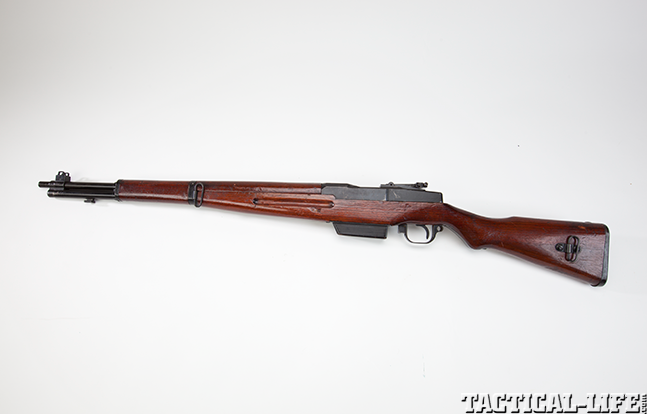For the 2015 issue of MILITARY SURPLUS, author W. Darrin Weaver investigated Japan’s experimental semi-auto rifle designs during World War II. These included designs intended for use with the Imperial Japanese Navy (IJN) and the Imperial Japanese Army (IJA).
“Few powers at the beginning of World War II had issued their troops workable self-loading battle rifles, and the Japanese were no exception—but they certainly tried,” Weaver writes. “In fact, the Japanese developed a number of semi-automatic prototypes, experimental designs and copies both prior to and near the end of World War II.”
An interesting moment in Japan’s design process came in 1943 when, as Weaver describes in detail, the Imperial Japanese Navy secured and attempted to copy U.S.-made M1 Garands.
Advertisement — Continue Reading Below
“The Imperial Japanese Navy … started its own program in 1943, recognizing that IJN Marines and paratroopers were desperately outgunned in the Pacific by U.S. troops. With the war going badly and Japanese industry stretched beyond its limits, a lengthy ground-up development program would not be possible. So, the IJN examined captured U.S. M1 Garand rifles stored at the Yokosuka Naval Arsenal, and simply decided to reverse-engineer and slightly modify the U.S. design.”
Weaver continues, “The main problem with simply copying the American Garand was the cartridge and the magazine. To ensure commonality, the weapon would have to be chambered in the by then standard Japanese 7.7mm on five-round stripper clips. The Garand’s magazine took an eight-round en bloc clip and could not be ‘topped off’ once loaded. When empty, as most shooters and collectors know, the clip is ejected with a very perceptible ping. This could give the firer’s position away and alert the enemy that he needed to reload the magazine, a weakness in the design that the IJN decided to remedy.”
To read the full article, check out the 2015 issue of MILITARY SURPLUS, available on Sept. 9, 2014. To subscribe, go to Tactical-Life.com/subscribe.
Advertisement — Continue Reading Below























